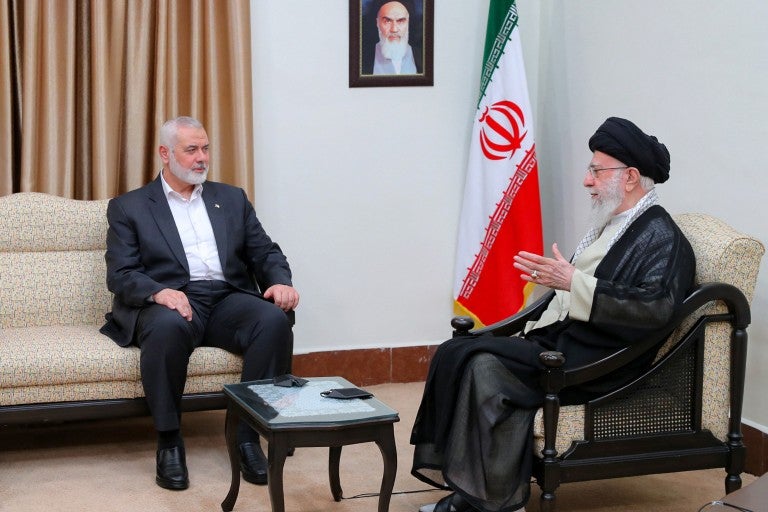May 14, 2021 — Tel Aviv
This piece originally appeared in New Europe.
No sooner had Palestinian “worshipers” on the Temple Mount chanted “Bomb, bomb Tel Aviv,” than Hamas gladly obliged and fired hundreds of rockets at Israeli civilians. To the applause of some of Jerusalem’s Palestinian residents, the Islamists’ first target was the very city they claimed to defend as their supposedly holy, future capital.
With that, the Islamist terrorists ruling Gaza have turned local street protests into another war against Israel. It’s time, therefore, to dust off this 10-point reporter’s guide for how to correctly cover the Israeli-Palestinian conflict, useful both for rookies and old hacks who may need a refresher course:
- The first order of business is for you to understand that your job isn’t to report the facts. Instead, your role is more that of a bard recounting a well-known epic, a morality play really, whose basic theme is quite familiar to your audience as it has a 2,000 year-long oral and written tradition: “The Jew as a uniquely wicked being.” In the modern era’s updated version this means depicting Israel as a “colonialist, racist, Jewish ethnostate that apparently delights in killing Palestinian babies.”
- For this blood libel to properly stick, you must reverse chronology and causality. It cannot be stressed enough how crucial it is to always lead with the Israeli response and bury somewhere deep in the text the barrage of Palestinian rockets that preceded. Under no circumstances must the headline reflect the true course of events. The innocent reader may otherwise conclude Israel is acting in self-defence.
- Always use intransitive verbs or the passive voice for Palestinians and the active voice for Israel. So when Palestinian terrorists try to infiltrate into Israel or fire missiles, please use such inconspicuous phrases as “Violence Broke out at the Gaza Border” respectively “Rockets Fired at Israel.” Once Israel is forced to respond, make sure everybody knows exactly who is doing the action and to whom. So write something like “Israel Bombs Gaza.” You don’t want to assign agency to Palestinians or accidentally remove it from the Jews.
- A special note to photo and TV journalists: Please forget all ethical standards normally guiding your war reporting. Your editors will expect a good number of crude close-ups of Palestinian casualties. You don’t want to disappoint them. It’s pivotal that viewers can juxtapose the gory pictures you deliver from Gaza to the sanitized or completely missing images they know from all other conflicts. Otherwise, they may actually come to believe that war is always hell and not only when Israel is involved.
- No need to carefully check stories, sources or images as they may have taught you in journalism school. If an Israeli driver is being pelted with stones, losing control of the car and almost lynched, it’s fine to jump to the (false) conclusion that he tried to run over Palestinians. Images showing devastation from, say, Syria are passed on as photos from Gaza? Just run with it. Remember, even utterly false stories ultimately tell the “meta-truth” (see point No.1).
- Avoid providing critical context that could help your audience better understand Israel’s actions. So don’t mention that Israel completely withdrew from Gaza in 2005 (even removing its dead from cemeteries), that the UN’s Palmer Report found Israel’s blockade to be a legal act of self-defence, or that Israel provides Gazans with food, electricity and energy even during the conflict etc.
- Claims about Palestinian casualties coming from the Hamas-run Gaza Health Ministry must be reported as indisputable facts as if provided by a reliable democratic government. Reserve your skepticism for the Jewish State. It’s also imperative to ascribe all Palestinian casualties to Israeli fire and to ignore evidence that many were caused by Hamas rockets falling on Gaza.
- Treat this conflict like a football match: The side with the higher score (of casualties) wins, i.e. is automatically deemed as morally superior and wronged. It doesn’t matter who started it, whether the casualty figures are inflated, or the dead are mostly terrorists, whether Hamas put Palestinian civilians purposefully in harms way or that the Israelis try their utmost to protect not only their own but also the Palestinian population. Any deviation from this time-honored script is just bound to get you into trouble with your editors.
- It’s never too early to start throwing around the word “disproportional” when it comes to Israeli military actions and to treat each Palestinian casualty as “evidence” of Israeli “war crimes.” Don’t feel restrained by irrelevant details, such as the fact that you are not an international lawyer and that the proportionality test is a very complex legal analysis that requires deep military knowledge and access to precise information on both sides of the conflict that you cannot possibly possess.
- In order to build a more convincing case for alleged Israeli war crimes it is key to ignore or at least play down a) evidence of Hamas using its own civilians as human shields and b) unprecedented Israeli efforts to avoid civilian casualties–such as calling Palestinians on their cell phones to warn them of impending strikes. Whatever you do, never compare Israel’s actions to those of other Western armies engaged in urban warfare against a terrorist army. Otherwise, you risk exposing that Israeli efforts to protect the enemy’s civilian population tend to be equal or superior to even NATO standards.
If you follow this decalogue religiously and hysterically with wall-to-wall coverage, people will eventually draw the intended conclusions about what is the true nature of both the Jewish state and the diaspora Jews supporting it.
Daniel Schwammenthal is Director of the AJC Transatlantic Institute.



